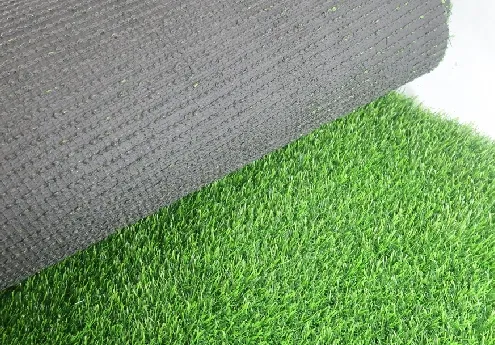
- Afrikaans
- Arabic
- Belarusian
- Bengali
- Czech
- Danish
- Dutch
- English
- Esperanto
- Estonian
- Finnish
- French
- German
- Greek
- Hindi
- Hungarian
- Icelandic
- Indonesian
- irish
- Italian
- Japanese
- kazakh
- Rwandese
- Korean
- Kyrgyz
- Lao
- Latin
- Latvian
- Malay
- Mongolian
- Myanmar
- Norwegian
- Persian
- Polish
- Portuguese
- Romanian
- Russian
- Serbian
- Spanish
- Swedish
- Tagalog
- Tajik
- Thai
- Turkish
- Turkmen
- Ukrainian
- Urdu
- Uighur
- Uzbek
- Vietnamese
Cost Analysis of Synthetic Soccer Field Installation and Maintenance
Nov . 08, 2024 10:34 Back to list
The Cost of Synthetic Soccer Fields A Comprehensive Overview
In the world of sports, soccer stands out as one of the most widely played and beloved games. With its increasing popularity, the demand for quality soccer facilities has surged, leading to a significant rise in the construction of synthetic soccer fields. These artificial surfaces provide advantages over natural grass fields, such as durability, lower maintenance costs, and the ability to withstand various weather conditions. However, the initial investment required for synthetic soccer fields can be substantial. In this article, we will explore the costs associated with synthetic soccer fields, factors influencing these costs, and the long-term benefits they offer.
Initial Costs of Synthetic Soccer Fields
The construction of a synthetic soccer field can vary widely in price, typically ranging from $500,000 to $1 million or more. Several factors contribute to this cost, including the type of synthetic turf selected, the size of the field, and the complexity of the installation process.
1. Type of Synthetic Turf There are various types of synthetic turf available, each with its own cost implications. Premium-grade turf, which mimics the look and feel of natural grass while offering enhanced durability, tends to be more expensive than lower-quality options. High-performance fields designed for professional use will also drive up costs significantly.
2. Field Size The standard size of a soccer field is approximately 100 yards long and 60 yards wide, but the dimensions can vary based on specific league requirements. Larger fields will naturally incur higher costs due to increased material and labor requirements.
3. Installation Complexity The installation process for synthetic fields requires a well-prepared base and drainage system to provide optimal performance and longevity. Fields built in challenging terrains or areas with poor drainage may require extra infrastructure, further increasing the overall expense.
Additional Costs
Beyond the direct costs of construction, other financial considerations must be factored into the total investment in synthetic soccer fields. These include
synthetic soccer field cost

- Maintenance Costs Although synthetic fields typically require less maintenance than natural grass, they are not maintenance-free. Regular upkeep such as brushing, cleaning, and infill replenishment is needed, which incurs ongoing costs. Annual maintenance can range from $20,000 to $30,000.
- Lighting and Amenities If the soccer field will be used for night games, the installation of adequate lighting will increase overall costs. Additionally, amenities such as benches, bleachers, goalposts, and scoreboard installations should be considered, adding to the initial investment.
Long-term Financial Benefits
Despite the high upfront costs, synthetic soccer fields can be viewed as a prudent investment over time. Here’s why
1. Longevity Quality synthetic fields can last anywhere from 10 to 15 years or more, often outlasting natural grass fields which require annual seeding, watering, and maintenance. This durability translates to fewer costs associated with field replacement or repair over time.
2. Increased Utilization Synthetic fields can be used year-round, regardless of weather conditions. This availability allows for more games, practices, and events, maximizing the return on investment. More playtime means more revenue opportunities for sports organizations and schools.
3. Lower Water and Chemical Needs Synthetic fields do not require irrigation, fertilizers, or pesticides, resulting in significant savings on water bills and maintenance supplies. In regions facing water scarcity, this can have a meaningful impact.
Conclusion
In summary, while the initial investment in synthetic soccer fields may seem daunting, it is essential to consider the long-term financial benefits, durability, and the enhanced playing conditions they provide. As more soccer programs and organizations recognize the value of synthetic turf, these fields are becoming an increasingly popular choice, paving the way for the future of soccer and sports facilities in general. Through careful planning and consideration of all factors involved, communities can make informed decisions that will benefit players, coaches, and fans alike for years to come.
-
The Benefits of Artificial Turf for Indoors
NewsJul.15,2025
-
How Artificial Grass Suppliers Ensure Quality Products
NewsJul.15,2025
-
Artificial Grass and Pets: A Space for Relaxation
NewsJul.08,2025
-
Balcony & Outdoor Decoration with Artificial Grass
NewsJul.08,2025
-
Best Indoor Artificial Grass for Home
NewsJul.07,2025
-
Best Pet Turf for Dogs: Safe & Durable Artificial Grass Options
NewsJul.07,2025
Products categories









